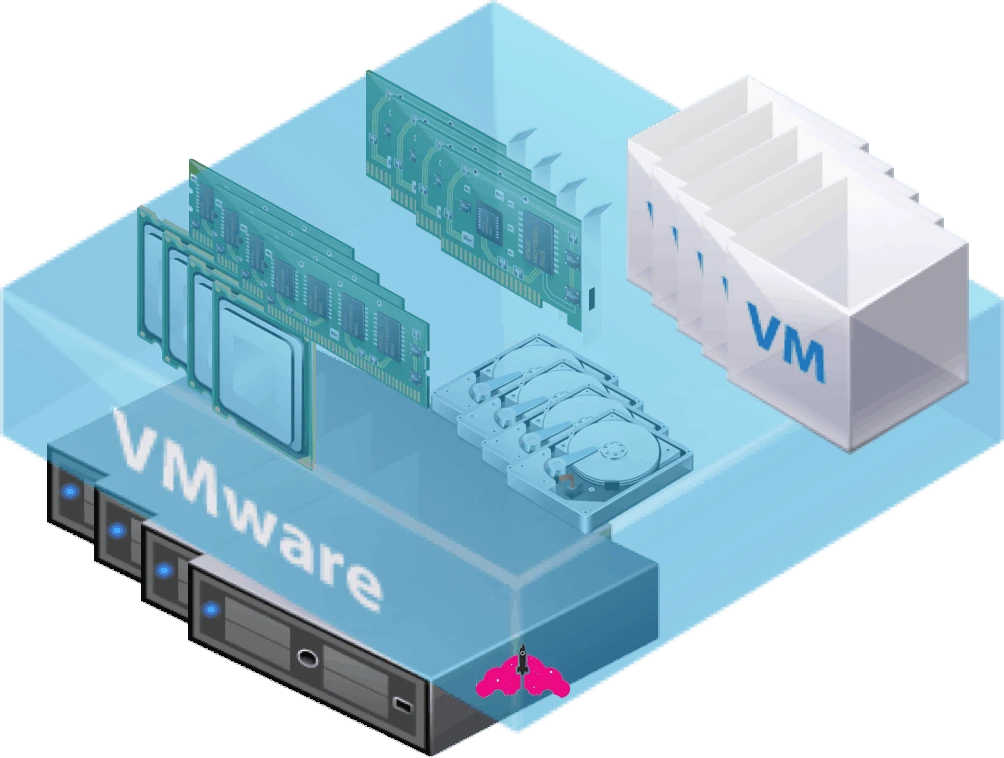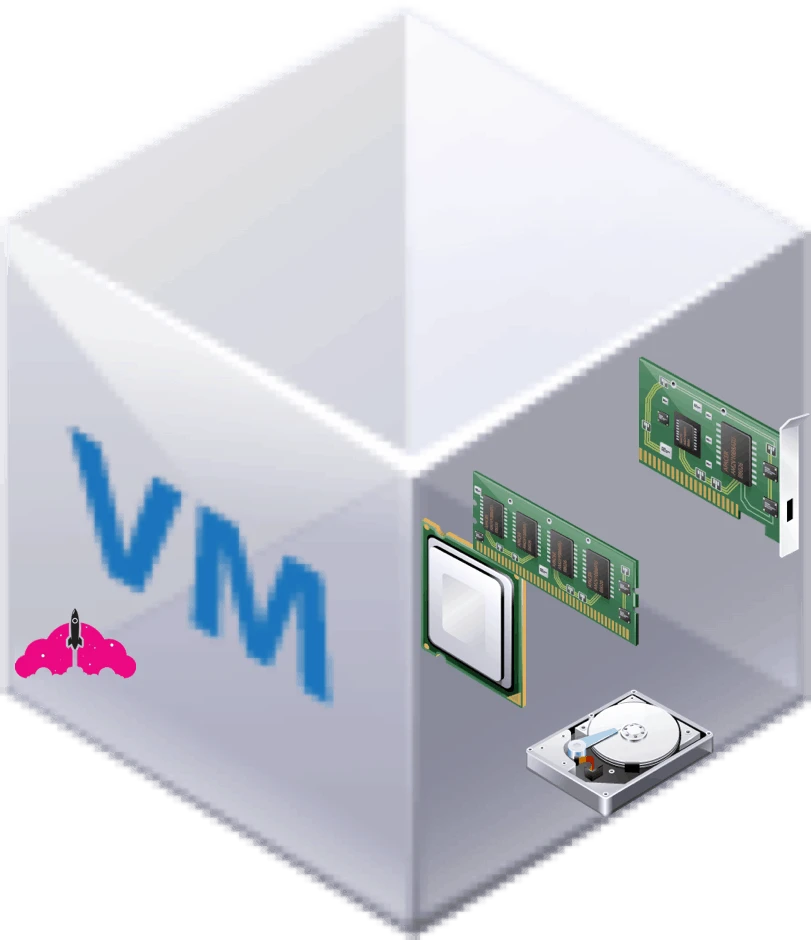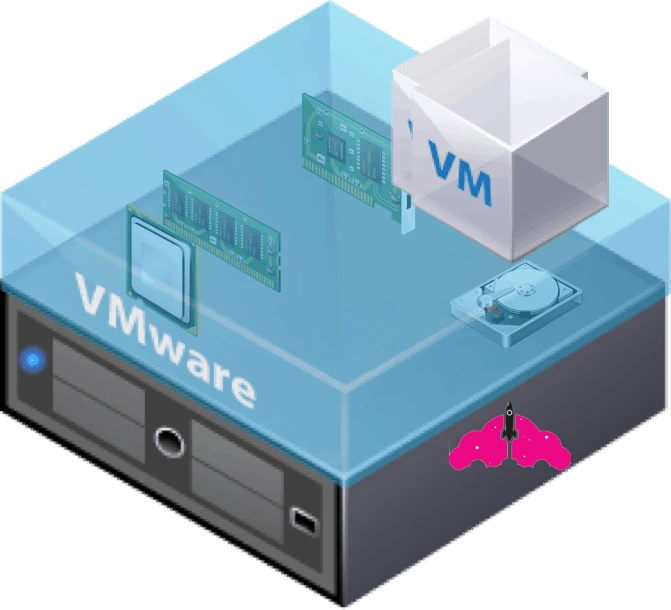Welcome to VMware basics! This page has everything you need to start your journey on VMware learning. Through this resource and series of articles we are going to break down VMware vSphere into the very basics, to help you get started. Stay tuned for frequent updates!
VMware Learning Overview – VMware Basics
This VMware learning resource will be structured as information and resources. For each topic, I will give a brief overview of what the topic is, and then provide other resources about it. This way, you can quickly understand the basics of a VMware based topic before going into detail.
What is VMware?
If you are here, you may be wondering what, exactly this VMware stuff is anyway. VMware is a company based out of Palo Alto, California best known for its virtualization technologies. The VMware of today is completely different than the VMware of 1998, but their core mission is the same: to provide data center technologies to maximize efficiencies and minimize downtime.
VMware achieves this through something called bare metal virtualization. Woah! That sounds confusing, but do not worry, it really is not. VMware makes special software called hypervisor software that runs on top of an ordinary server in the data center. This special software operating system allows virtual servers, or virtual machines to run on the physical server.
This is a one to may relationship. For each single physical server in the data center, you can run many virtual machines on top of the hypervisor software, depending on the requirements of the virtual machines, and the resources in the physical server.
Resource: What is VMware? An in depth answer to the question “What is VMware?”.
Resource: 13 Things Only Early VMware Administrators Remember. A history lesson in the evolution of VMware products starting from the early 2000s.
What is a Virtual Machine?
A virtual machine looks, feels, and acts like any other server in the data center, except for the fact that it does not physical exist. It exists in the form of data, and multiple files full of data that make up the virtual machine. The hypervisor software allows the virtual machine to use the resources on the physical server where it lives, such as:
- Compute (CPU and Memory)
- Network
- Storage
One of the great things about virtual machines, is that any of the above components can be modified with a few clicks. In order to provide this flexibility, the hypervisor does need a little help, which comes in the form of VMware tools and virtual hardware compatibility.
VMware tools is a software package that acts as an additional translation layer between the guest operating system and the hypervisor. Since you can run any operating system in a virtual machine, the hypervisor must make sure that the operating system sees it like it would any other server.
Another component is virtual hardware. VMware virtual hardware has also increased in functionality as the years have passed, so it is essential it can be updated with new versions of VMware vSphere in order to provide the newest features and functionality to virtual machines and their operating systems.
Once you understand how a virtual machine works in the world of VMware, everything translates directly to the cloud.
Resource: What is VMware Tools, and Why is it Needed? A more detailed look at VMware tools and why it is so important for our virtual machines.
Resource: Updating VMware Tools and Virtual Hardware Compatibility with VMware vSphere Update Manager. See how easy it is to update your crucial virtual machine components with the VMware vSphere platform.
VMware Licensing
When it comes to VMware vSphere, a very important aspect of your vSphere deployment is your VMware licensing. Different levels of VMware products have different types of licenses available.
When it comes to your data center, the main flavors of vSphere licensing are VMware vSphere Standard and VMware vSphere Enterprise Plus. Other vSphere editions such as vSphere with Operations Management (which adds vROPS) and vSphere Platinum (which adds VMware AppDefense) add value by adding these additional products to core VMware vSphere features and functionality.
For remote and branch offices, there is vSphere ROBO, which is available at a smaller scale in packs of 25 virtual machines to meet the needs of remote sites.
Finally is VMware vSphere Essentials, for small businesses and organizations. With the various VMware licence models available, there is a version of VMware vSphere for every organization and budget.
Critical Components of a VMware Environment
When it comes to a VMware vSphere environment, almost everything can be broken down into three components:
- Compute (CPU and Memory)
- Network
- Storage
We already mentioned this in the context of our virtual machines, but this also applies to our ESXi hosts and our vSphere clusters.
Take a look at this ESXi host:
After we install the ESXi hypervisor software, the compute, network, and storage resources can be used to power those virtual machines.
Then, when we look at our vSphere cluster, we have the same thing again.

The VMware vSphere cluster operates a bit differently. It is more focused on making sure those resources stay balanced across those ESXi hypervisor hosts for peak performance, by using things like VMware vSphere DRS.
Over and over again in VMware (and in the cloud) we see the same three critical components, over and over again.
VMware vSphere Networking
When it comes to VMware vSphere networking, there are a number of things to consider. You must make sure you understand the throughput your ESXi host will need to your network, so you can select the correct physical network card configuration.
Then, you need to decide which type of switch to use – a standard virtual switch or a distributed virtual switch.
If that wasn’t enough, there are even more options to consider once you have configured your switch, like NIC teaming and security policies.
Luckily, the vSphere Networking Guide you need is here! Be sure to check it out in order to get an overview of the fundamentals of VMware vSphere Networking.
Stay Tuned…
Stay tuned for more updates on VMware basics, this is your ultimate VMware learning guide!


